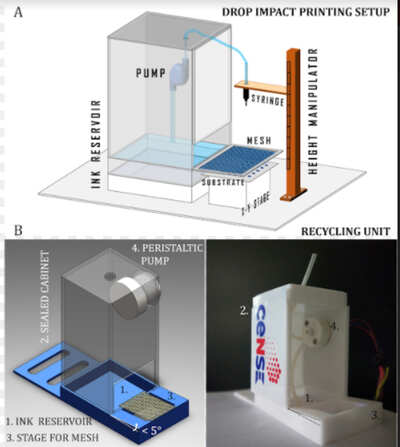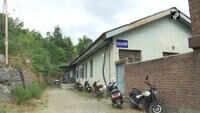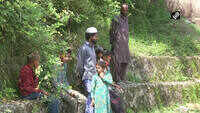
BENGALURU: Researchers at the Centre for Nano Science and Engineering (CeNSE), the Indian Institute of Science (IISc) said on Thursday, they have developed a low-cost, drop-on-demand printing technique capable of generating a wide range of droplet sizes using a variety of inks.
"Apart from traditional printing, it could also potentially be useful for 3D printing of living cells, ceramic materials, electronic circuits and machine components," a statement issued reads. The statement further states that the new technique has been developed by Prosenjit Sen, associate professor in CeNSE and his team.
Their study has now been published in Nature Communications, a peer-reviewed international scientific journal.
Printers used currently — from inkjet printers to bio-printers that dispense living cells — have nozzles with a small opening to eject droplets. However, the researchers argue that particles in the ink or a cell suspension can clog this opening, limiting the amount of particles or cells that can be loaded initially. Consequently, the thickness of the layer that can be printed is also limited.
"Our new technique replaces the nozzle with a mesh covered with chemically treated nanowires that repel water. When a large droplet impacts on this mesh, it bounces back. However, a small part of the liquid is ejected through the mesh pore as a jet that breaks to create a micro-scale droplet, which is then printed onto a surface," the statement reads.
Because of the short contact time of the impacting droplet with the mesh — about 10 milliseconds — the particles in the ink do not get a chance to clog the mesh pore, the researchers say. This allows them to load the ink with larger quantities of nanoparticles, enabling printing of very thick lines in a single cycle. The mesh can also be easily cleaned and reused.
"The mesh costs only a small fraction of the nozzles that it replaces. This significantly reduces the operational cost when compared to conventional printing techniques," says Sen, whose lab has been working on developing nanostructured surfaces that can repel water.
When large droplets hit such nanostructured meshes at high speeds, jets are ejected. While studying this phenomenon, the researchers found that the velocity of the ejected jet was surprisingly higher than the velocity of the impacting droplet.
"This was the first hint that some mechanism was playing a role in focusing the kinetic energy," says Chandantaru Dey Modak, first author and PhD student at CeNSE. "At this point, we started asking the following questions: What is this focusing mechanism? Can this mechanism be exploited to reliably generate single microscale droplets?"
The team captured high-speed videos — 50,000 to 80,000 frames per second — of these impacting droplets, and found that an air cavity was being formed at the droplet centre. During the recoil phase of the impact, this cavity collapsed, focusing all the kinetic energy into a single point, resulting in the generation of individual droplets.
"No secondary droplets that result in unwanted scatter were generated. The size of the droplets ejected could also be tweaked by adjusting the pore size of the mesh," the researchers said, adding that they were able to demonstrate the use of this technique for various applications.
"Using drop impact printing, we could print 3D pillars of different sizes, an electronic circuit for semiconductor device applications, and bio-based droplet arrays for cell culture," says Modak. "The capability to print a wide range of droplet sizes while using different kinds of inks for different applications makes this technique unique."
"Apart from traditional printing, it could also potentially be useful for 3D printing of living cells, ceramic materials, electronic circuits and machine components," a statement issued reads. The statement further states that the new technique has been developed by Prosenjit Sen, associate professor in CeNSE and his team.
Their study has now been published in Nature Communications, a peer-reviewed international scientific journal.
Printers used currently — from inkjet printers to bio-printers that dispense living cells — have nozzles with a small opening to eject droplets. However, the researchers argue that particles in the ink or a cell suspension can clog this opening, limiting the amount of particles or cells that can be loaded initially. Consequently, the thickness of the layer that can be printed is also limited.
"Our new technique replaces the nozzle with a mesh covered with chemically treated nanowires that repel water. When a large droplet impacts on this mesh, it bounces back. However, a small part of the liquid is ejected through the mesh pore as a jet that breaks to create a micro-scale droplet, which is then printed onto a surface," the statement reads.
Because of the short contact time of the impacting droplet with the mesh — about 10 milliseconds — the particles in the ink do not get a chance to clog the mesh pore, the researchers say. This allows them to load the ink with larger quantities of nanoparticles, enabling printing of very thick lines in a single cycle. The mesh can also be easily cleaned and reused.
"The mesh costs only a small fraction of the nozzles that it replaces. This significantly reduces the operational cost when compared to conventional printing techniques," says Sen, whose lab has been working on developing nanostructured surfaces that can repel water.
When large droplets hit such nanostructured meshes at high speeds, jets are ejected. While studying this phenomenon, the researchers found that the velocity of the ejected jet was surprisingly higher than the velocity of the impacting droplet.
"This was the first hint that some mechanism was playing a role in focusing the kinetic energy," says Chandantaru Dey Modak, first author and PhD student at CeNSE. "At this point, we started asking the following questions: What is this focusing mechanism? Can this mechanism be exploited to reliably generate single microscale droplets?"
The team captured high-speed videos — 50,000 to 80,000 frames per second — of these impacting droplets, and found that an air cavity was being formed at the droplet centre. During the recoil phase of the impact, this cavity collapsed, focusing all the kinetic energy into a single point, resulting in the generation of individual droplets.
"No secondary droplets that result in unwanted scatter were generated. The size of the droplets ejected could also be tweaked by adjusting the pore size of the mesh," the researchers said, adding that they were able to demonstrate the use of this technique for various applications.
"Using drop impact printing, we could print 3D pillars of different sizes, an electronic circuit for semiconductor device applications, and bio-based droplet arrays for cell culture," says Modak. "The capability to print a wide range of droplet sizes while using different kinds of inks for different applications makes this technique unique."
Download
The Times of India News App for Latest India News

Coronavirus outbreak
Trending Topics
LATEST VIDEOS
India
 Poultry production in Valley scores 85% success results
Poultry production in Valley scores 85% success results  This step will show India’s strength to China: Ramdas Athawale on 118 new Chinese apps banned
This step will show India’s strength to China: Ramdas Athawale on 118 new Chinese apps banned  Watch: Child trapped between rocks rescued in Odisha’s Boudh
Watch: Child trapped between rocks rescued in Odisha’s Boudh  Odisha: 5-year-old boy, trapped between two rocks in a river, rescued by fire department workers
Odisha: 5-year-old boy, trapped between two rocks in a river, rescued by fire department workers  Locals residing near LoC in Poonch find safe haven in bunkers
Locals residing near LoC in Poonch find safe haven in bunkers  JEE Main 2020: Student travels 120 km on bike to appear in examination in Bhopal
JEE Main 2020: Student travels 120 km on bike to appear in examination in Bhopal
More from TOI
Navbharat Times
Featured Today in Travel
Quick Links
Coronavirus in MumbaiCoronavirus in KolkataCoronavirus in HyderabadCoronavirus in DelhiCoronavirus in BangaloreCoronavirus symptomsCoronavirus in IndiaWhat is CoronavirusCoronavirus NewsSolar EclipseNPRWhat is NRCCAB BillCAB and NRCRTI BillPodcast newsLok SabhaShiv SenaYSRCPCongressBJP newsUIDAIIndian ArmyISRO newsSupreme Court
Get the app



